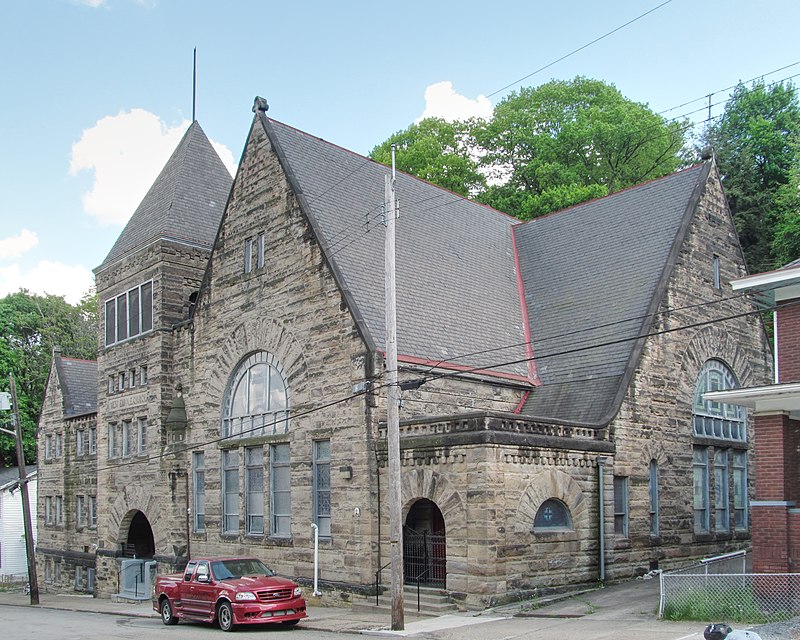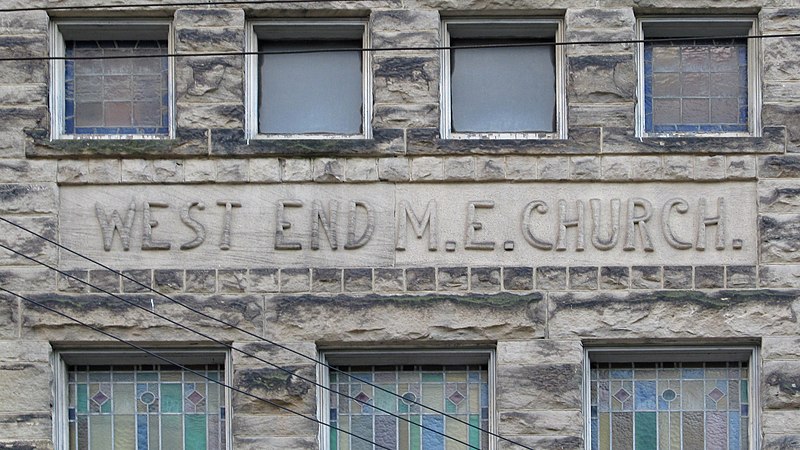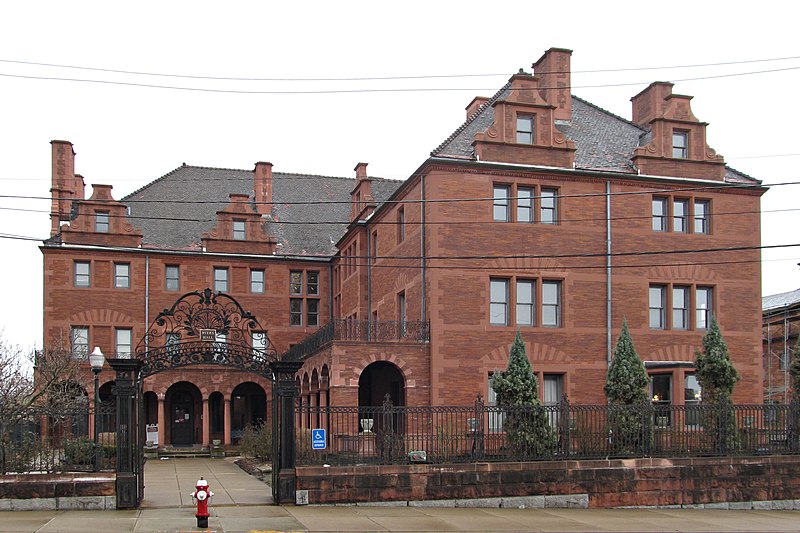
The titanic Carnegie Institute building was designed by Longfellow, Alden & Harlow, Andrew Carnegie’s favorite architects. Above: the Music Hall entrance. Below: the main building seen from the west, across Forbes Avenue.


This was the home of one of the founders of the famous Boggs & Buhl department store, which lasted until 1958. A few years after Father Pitt took this picture, this grand house was grandly restored and opened as “The Inn on the Mexican War Streets.” Before the restoration, it had been the parsonage of Trinity Lutheran Church next door, creating a curious spectacle of a parsonage considerably grander than its squat little modern church. But the house needed more maintenance than the church could afford: in fact the new owners spent more than a million dollars fixing the place up.
If you look at this picture, you may have a vague impression that something is missing from this house; but unless you are in the architecture business it might take you ages to guess what it is. There are no gutters and no downspouts. It seems that Mr. Boggs had a thing about gutters. Instead, there is a remarkable internal drainage system that, when it works, carries runoff through the walls, and, when it is broken, pours runoff in a burbling cascade down the grand staircase. That is one of the reasons it took a million dollars to restore this house.
Addendum: The architects were Longfellow, Alden & Harlow; the house was built in 1888.

In 1888 the Allegheny County Courthouse was finished, and by then its influence in Pittsburgh had already been profound. H. H. Richardson predicted, correctly, that it would be his most famous work; he died in 1886 without seeing it completed, when the mania for “Richardsonian Romanesque” in Pittsburgh was only beginning. Fortunately several competent Romanesque architects were available to supply the buildings Richardson could no longer provide.
Although the Pittsburgh History and Landmarks Foundation plaque on the building attributes it to Frank Alden of Longfellow, Alden & Harlow, the architect was actually James P. Bailey, an accomplished designer of churches who took to the Richardsonian Romanesque style very well. The lot is difficult and unpromising, but Bailey’s design makes the irregular topography part of the romance.1

The church is vacant at the moment; it would make a fine studio for some prosperous artist.


Connoisseurs of Victorian lettering will be delighted by the inscriptions.


If you were a millionaire in Pittsburgh in the late 1800s, of course you expected to have a mansion by Longfellow, Alden & Harlow. They were Andrew Carnegie’s favorite architects, after all. This Renaissance palace on Ridge Avenue is particularly splendid. Although it now belongs to the Community College of Allegheny County, its grand interior spaces have not been altered very much.

The cloister-like arcade in front is one of the most striking features of the house.

This gate, which is either original or at least quite old, is kept in beautiful shape.

Now the Music Building of the University of Pittsburgh, this house (built in 1884) was a gift from his wife to the pastor of the Bellefield Presbyterian Church across the street. It is thus one of the few buildings in Oakland that predate Oakland (along with the tower of the church, which still stands beside a modern office building). It is also a lesson for clergy: if your particular sect permits marriage, it is a good idea to marry an heiress. You can see the advantages. Most pastors’ wives do not give their husbands a mansion designed by Longfellow, Alden & Harlow, and that is because most pastors do not sensibly marry heiresses as they ought to do.

All the details of the Carnegie Institute buildings (designed by Longfellow, Alden & Harlow) are worth observing. Here is a light fixture held up by a splendid grotesque arm.

This was a very tall building when it opened in 1892. It’s certainly stretching a point to call this a skyscraper, yet it is in some ways the seed of all subsequent skyscrapers in Pittsburgh. This was the first building in Pittsburgh, and one of the first in the world, built with steel-cage construction, which makes practically indefinite height possible. Below we see the Conestoga Building with a couple of its great-grandchildren behind it: One PPG Place and Fifth Avenue Place.
